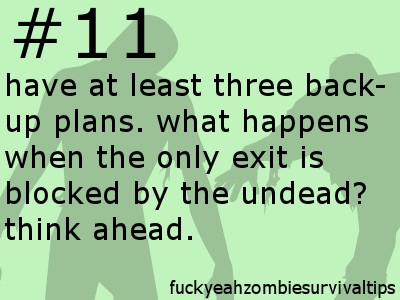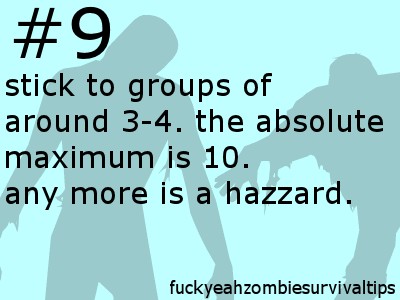
So they can just start loading up with guns and get on their motorcycles." Brooks also compared the interest in surviving a zombie apocalypse to people preparing for a Soviet invasion of America in the 1980s after the film Red Dawn was released.

In an interview with Ain't it Cool News, Max Brooks commented on the fans of zombie apocalypses: "I don't know what's scarier, the fact that zombies could rise or the fact there are actually people out there that can't wait for it to happen. In The Zombie Survival Guide, Max Brooks devotes an entire section to analyzing what measures should be taken to survive the undead world, and possible outcomes. Entire cities and nations were over run with the undead, and the uninfected population had to deal with the large scale breakdown of order in a chaotic dystopia. The Zombie population rose to match, possibly even exceed the human one, on a global scale. For a variety of reasons (including those listed above, and also many having to do with our globalized, interconnected, interdependable civilization - see Modern Vulnerability). This scenario was portrayed in stunning detail in Brooks' later work, World War Z. In Max Brooks' The Zombie Survival Guide a Zombie Apocalypse would be classified as a Class 4 Outbreak. According to a 2009 Carleton University and University of Ottawa epidemiological analysis, an outbreak of even Living Dead's slow zombies "is likely to lead to the collapse of civilization, unless it is dealt with quickly."

In most cases of "fast" zombies, creators use mindless human beings (as in Zombieland and Left 4 Dead) instead of re-animated corpses to logically counter the "slow death walk" of Romero's zombies. Recent films, however, have refeatured zombies that are more agile, vicious, intelligent, and stronger than the traditional zombie.

Generally the zombies in these situations are the slow, lumbering and unintelligent kind first made popular in the 1968 film Night of the Living Dead.


 0 kommentar(er)
0 kommentar(er)
